What Do You Get With 14 Inches of Rain?
Posted: May 11, 2024 Filed under: Gardening | Tags: Automatic Gardening, Gulf Coast gardening, Rain Lilies, Zephyranthes 13 Comments
Our man-made lake that dams up a river came out of its banks after 14 inches of rain over a couple of days. Luckily, the lake did not reach any of the houses and the streets acted as designed to become streams to keep the water from houses. A bench and trash can are in the water where the path was covered.

And what do you get with rain? Rain Lilies of course.

These quirky flowers will only bloom with rainwater. Above is one that developed as a double.

The Rain Lilies or Zephyranthes are reproduced by offsets and seeds. I find them all over my yard and even in flower pots.
Amaryllis
Posted: May 9, 2024 Filed under: Gardening | Tags: Amaryllis, Automatic Gardening, Gulf Coast gardening, Year-round gardening 12 Comments
Most of the Amaryllis I have planted in the garden have stopped blooming. They send up leaves, but no flowers.

This one, which was tagged Specialty Amaryllis “Fairytale”, has been blooming for several years and usually, the “fancy” ones are the weakest. Not only did it make four gorgeous flowers, but it also sent up another bud.

When the first flower stalk was finished, I had four more Fairytale candy-stripped flowers for a couple more weeks.
Acorn Mast Aftermath
Posted: April 24, 2024 Filed under: Gardening | Tags: acorn mast, Automatic Gardening, Gulf Coast gardening, oak tree, Southern Gardening 8 Comments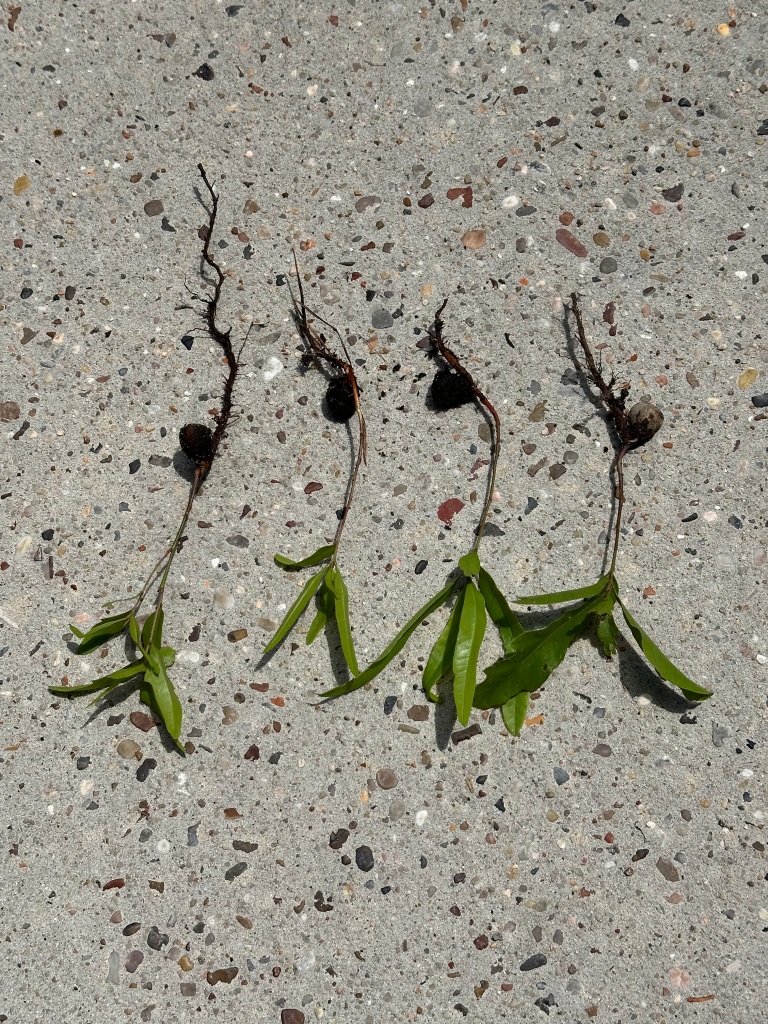
I had a post about the oak trees having an acorn mast. I was correct in predicting I would be pulling up many young oak trees. The squirrels have been very helpful burying them in the garden beds and lawn. I have replanted a few and I let the ones growing in appropriate areas alone. Time will tell if any grow into a mighty oak tree.
All is Right in the World
Posted: April 22, 2024 Filed under: Gardening | Tags: Amaryllis, Automatic Gardening, Caterpillar, Gulf Coast gardening, Hummingbird, Southern Gardening, Subtropical Gardening 18 Comments
At last, the garden beds are full and bursting with color.
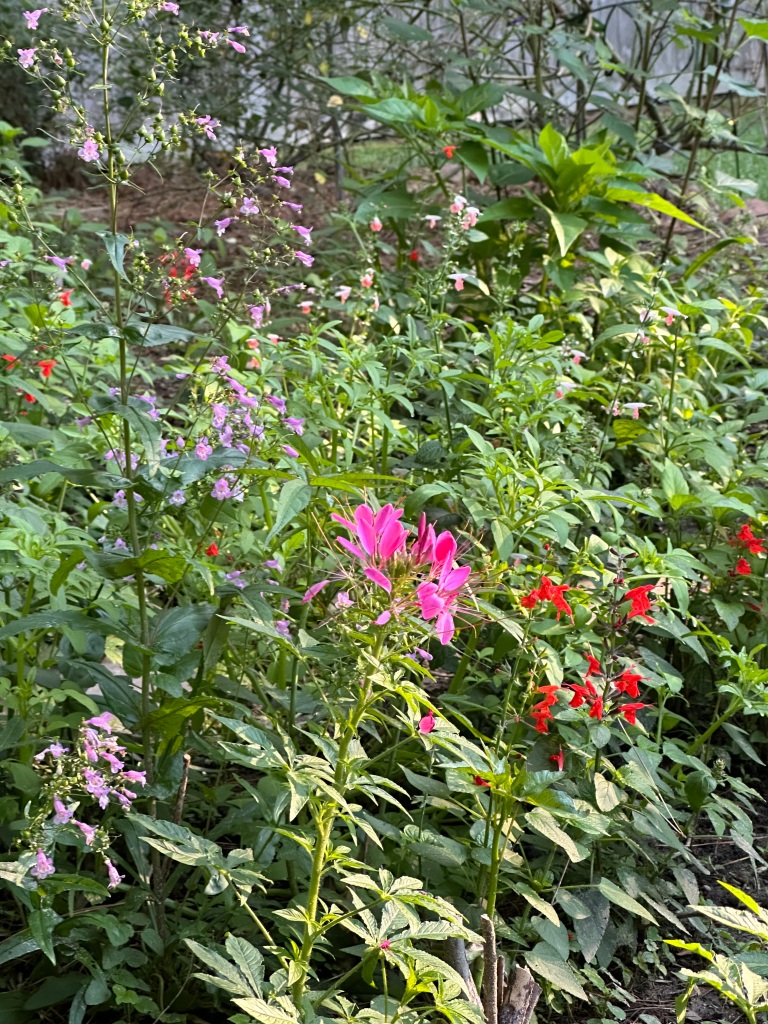
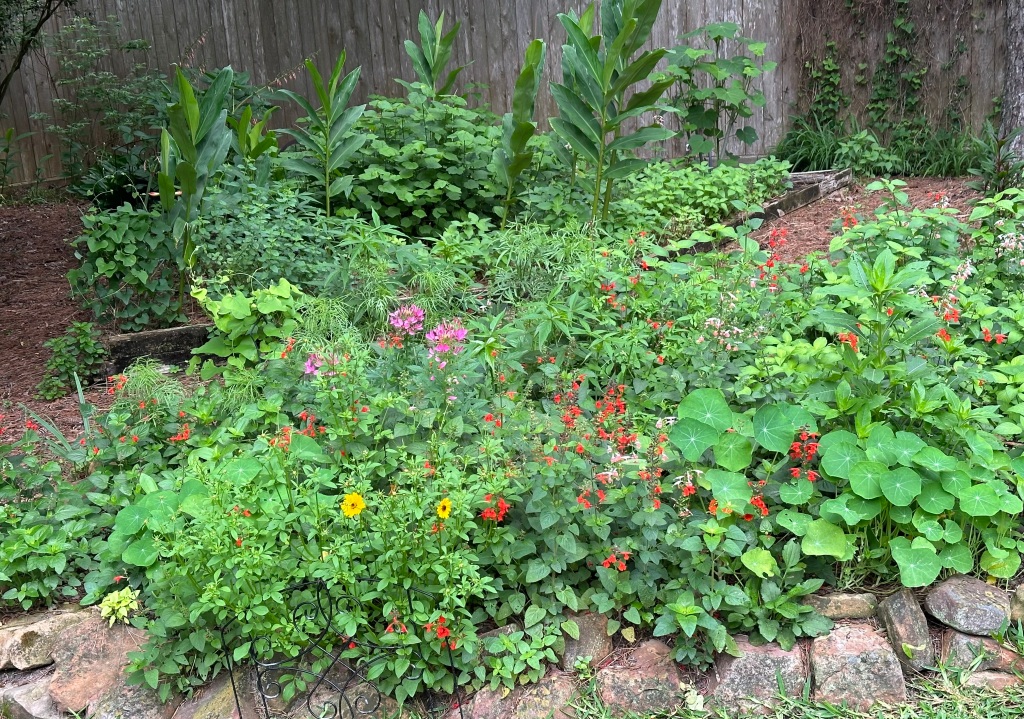
Many of these flowers would have been blooming earlier but were knocked back by freezing weather.
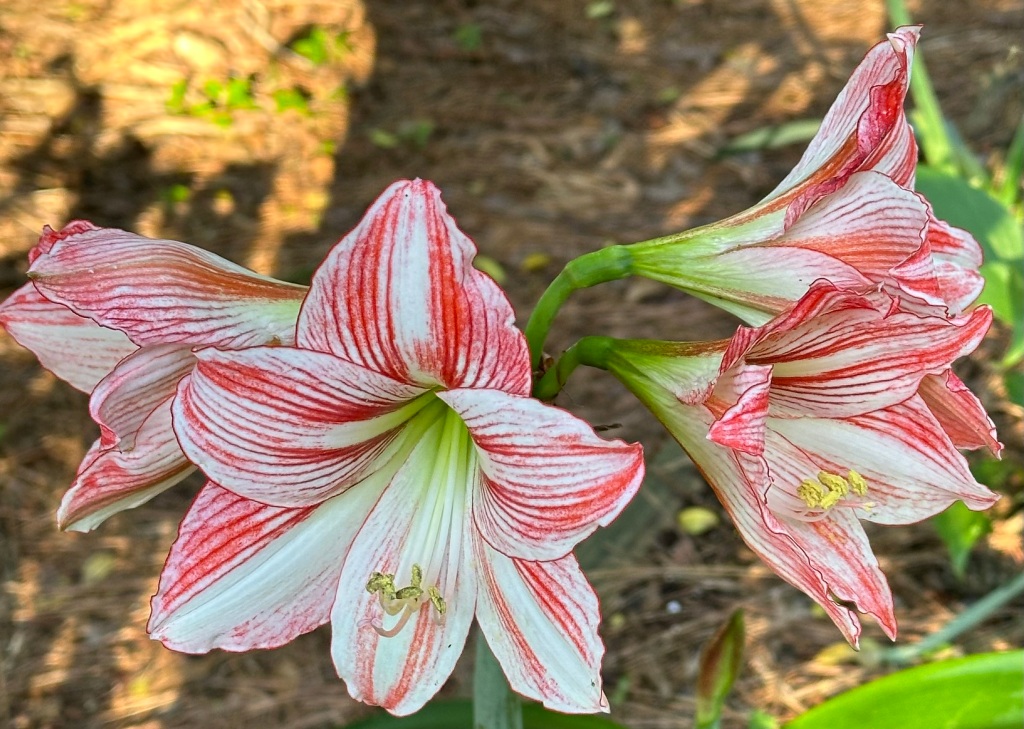
Thankfully, the Amaryrillias bulb did not turn to mush and it put on a beautiful display. A second stem with buds is coming up.
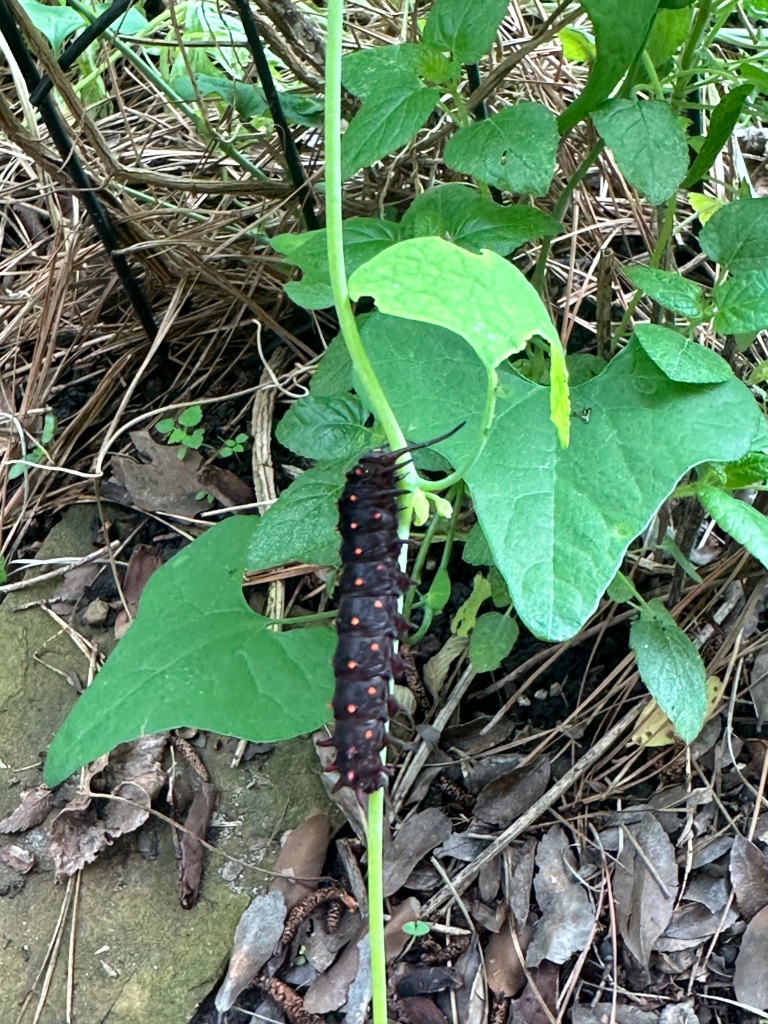

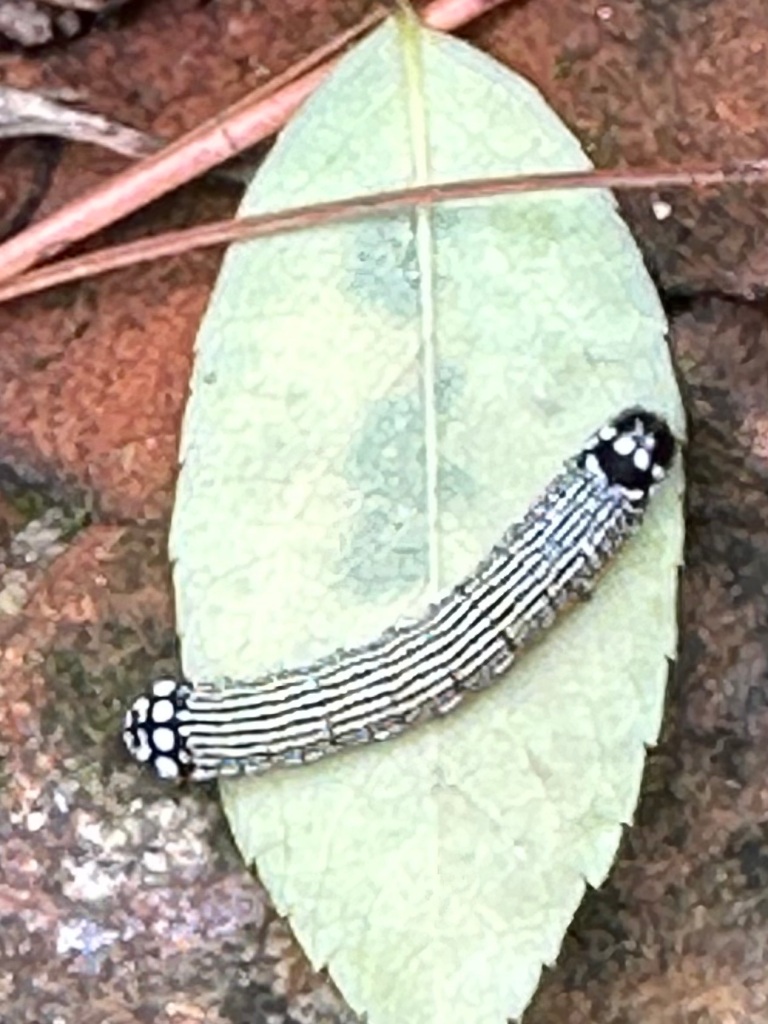
A variety of caterpillars have hatched.
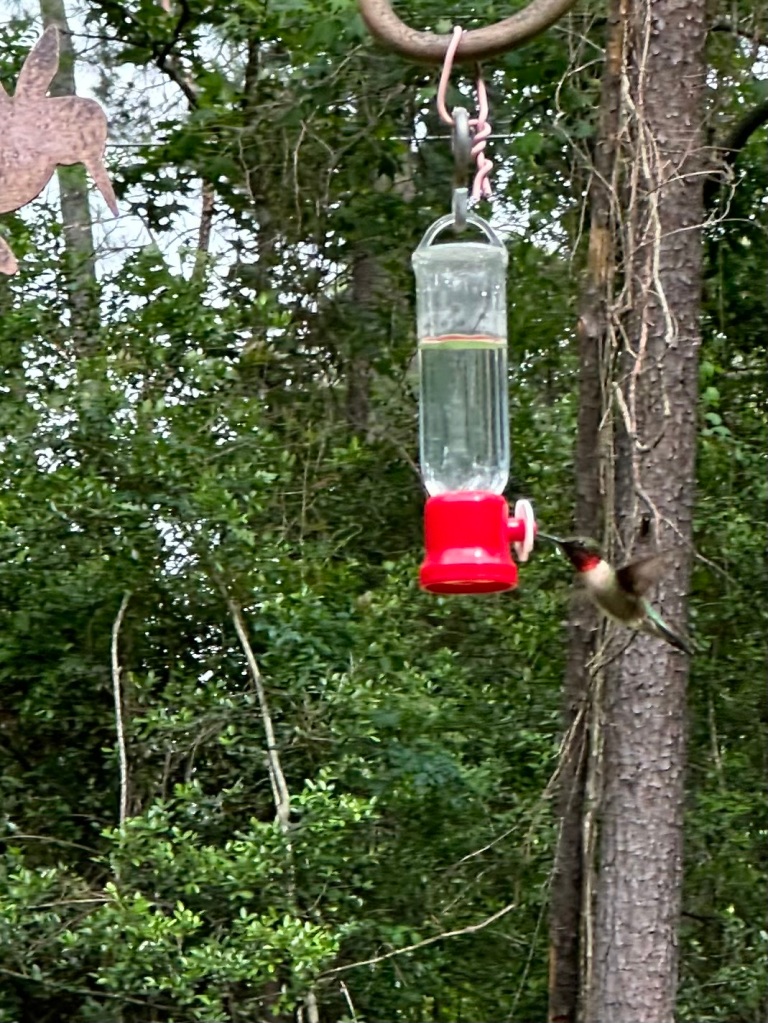
And the hummingbirds have come back. All is right in my backyard world.
Finally Flowers!
Posted: April 1, 2024 Filed under: Gardening | Tags: African Hosta, Automatic Gardening, cannas, Drimiopsis maculata, Gulf Coast gardening, Gulf Coast Penstemon, Little White Soldiers, purple Oxalis, Year-round gardening 27 Comments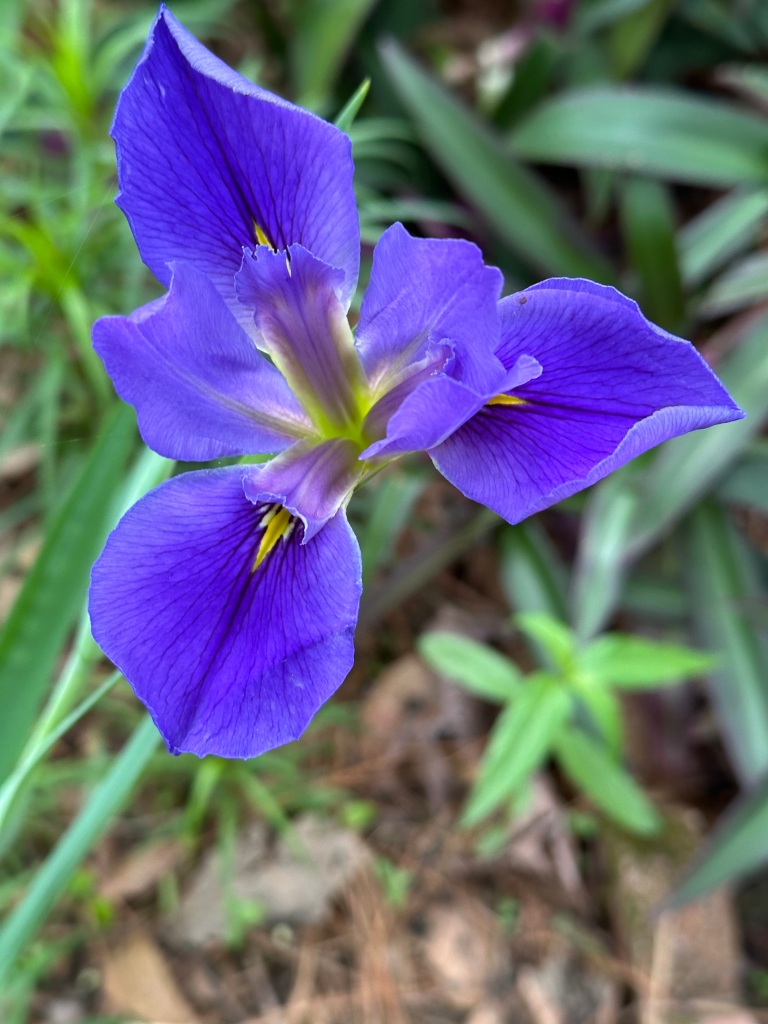
I’ve been slightly jealous of my northern gardener friends’ pictures of daffodils, forsythia, hellebore, and other early bloomers. My plants are finally coming back from the freeze and there are a few in bloom. Above is my “mulch pile” Iris. The Iris arrived in a mulch delivery over 30 years ago and proved to be very hardy. It has managed to reproduce too.

White Soldiers or Drimiopsis maculata is a great plant for this area. It is reliable and spreads. The flowers are not that exciting and after the bloom, they will make bulblets and new plants. They are also called African Hosta and are the closest to a Hosta we can grow here.

One of Cannas has bloomed already. Another plant that reproduces easily.
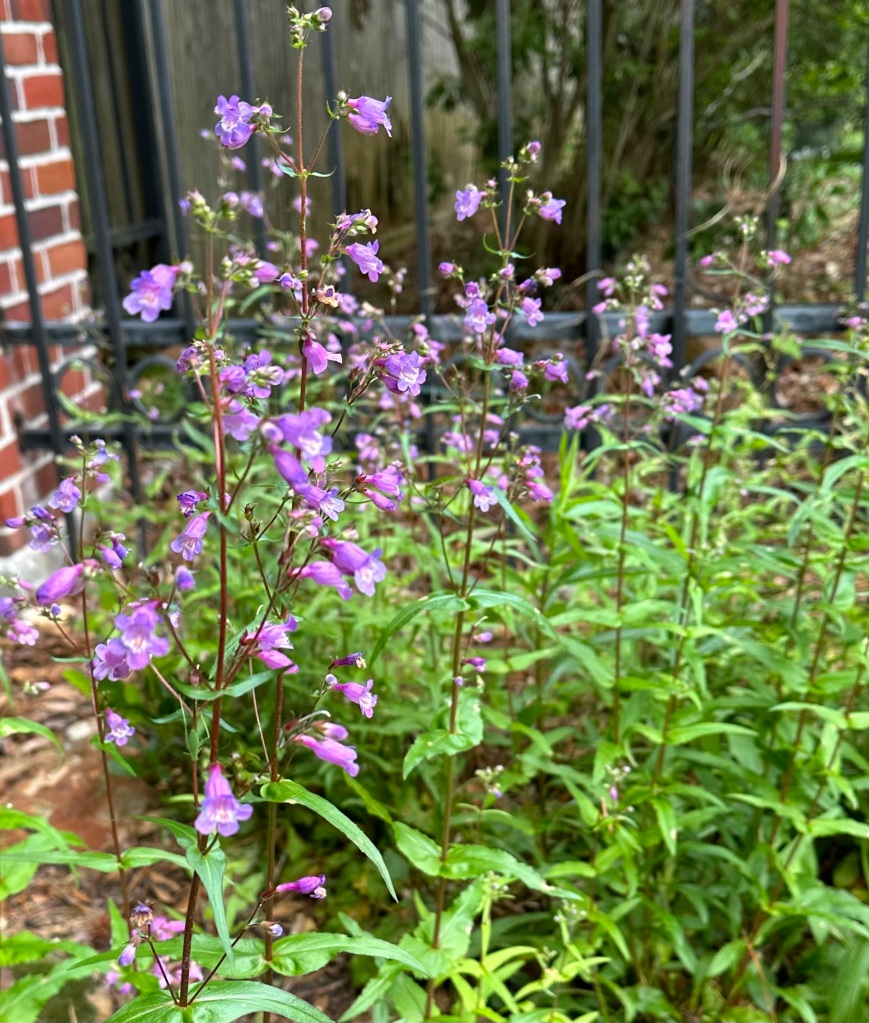
The Gulf Coast Penstemon is really putting on a show. The only thing is that I did not plant them in this bed.
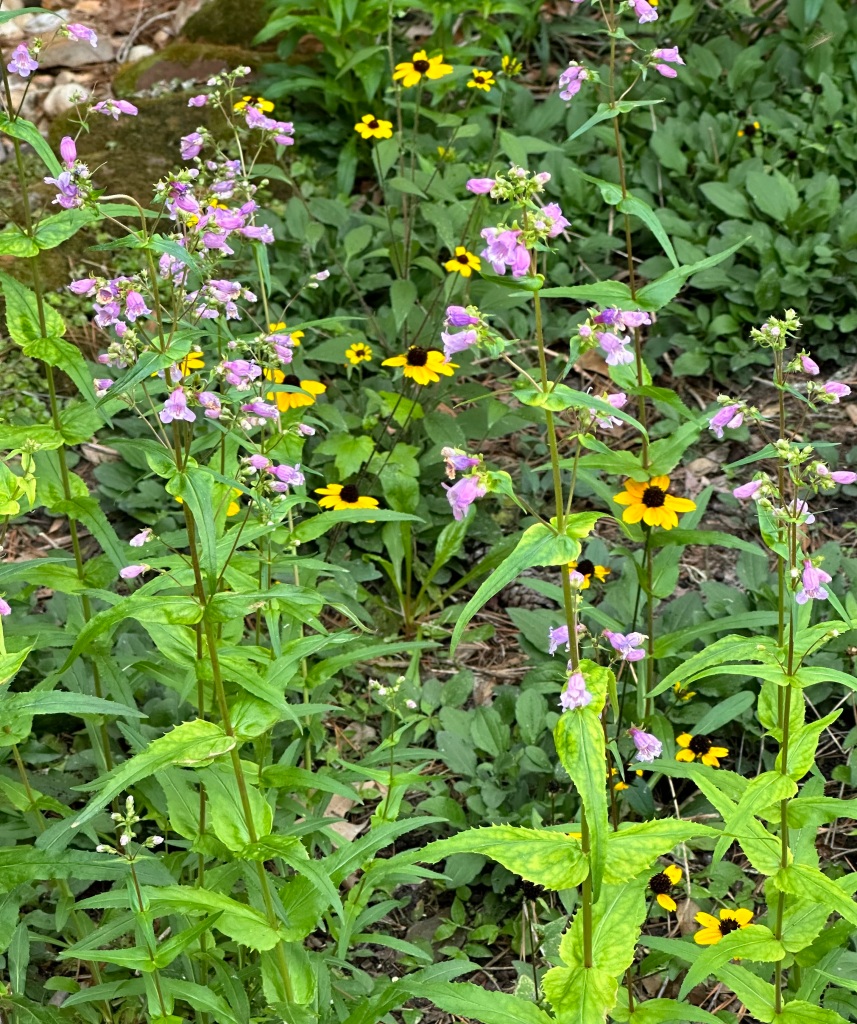
Black-eyed Susans have also started to flower and make a nice spring mix with the Gulf Coast Penstemon.
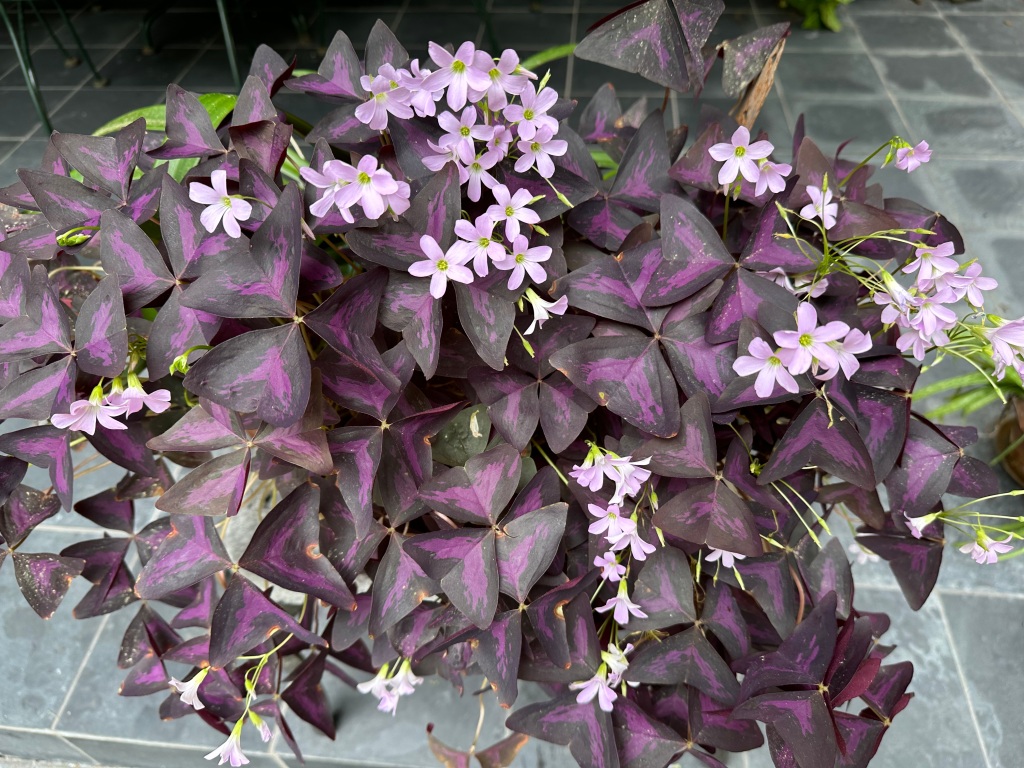
The Purple Oxalis is having a very happy spring. These are in two pots I have next to each other and they make a great display. I also have the Oxalis in two beds and they always come back every year.
And Just Like That
Posted: March 4, 2024 Filed under: Gardening | Tags: Automatic Gardening, Ecomecon chionatha, Gulf Coast gardening, Leucojum vernum, Rose Cramoisi Superieur, Snow Poppy, Tulip Magnolia, Violets Snowflakes 16 Comments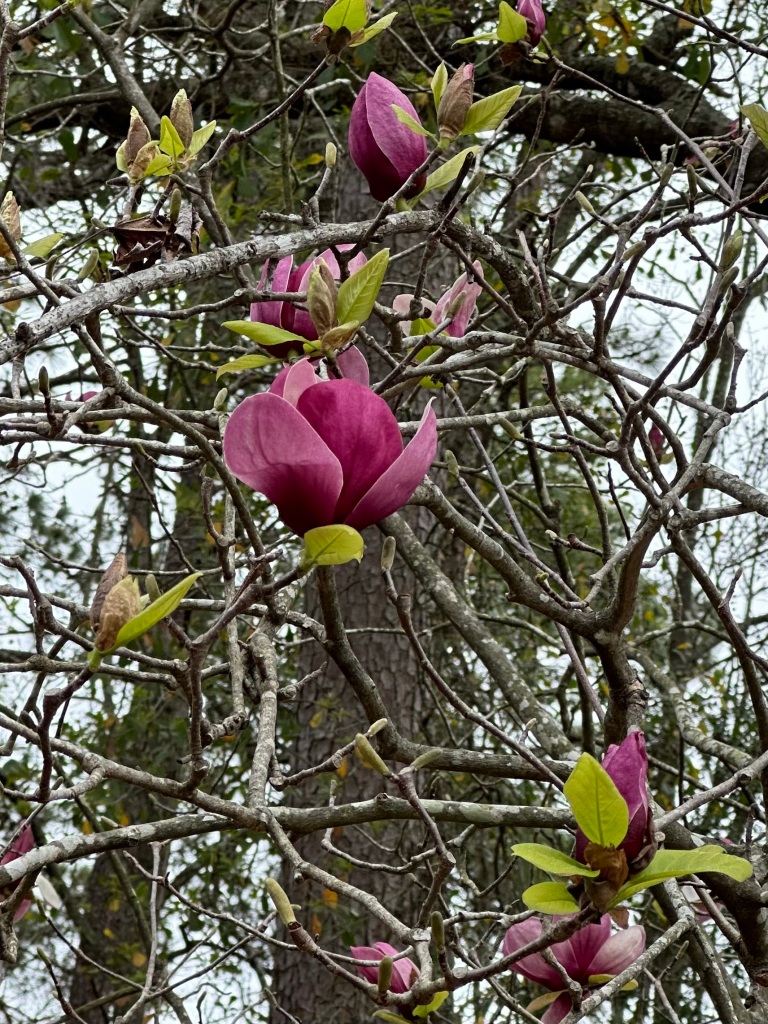
Spring has arrived seemingly overnight. It is a pleasure to find something new blooming every day Here are the first few to open. Above is a Tulip Magnolia.
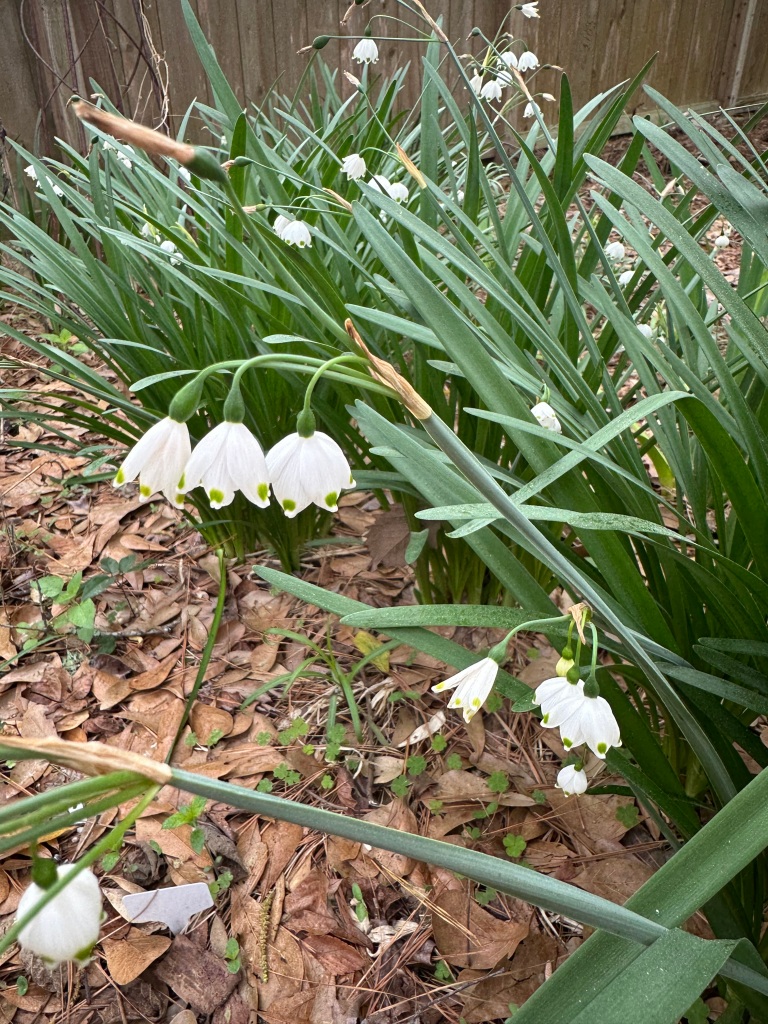
Snowflake, Leucojum vernum

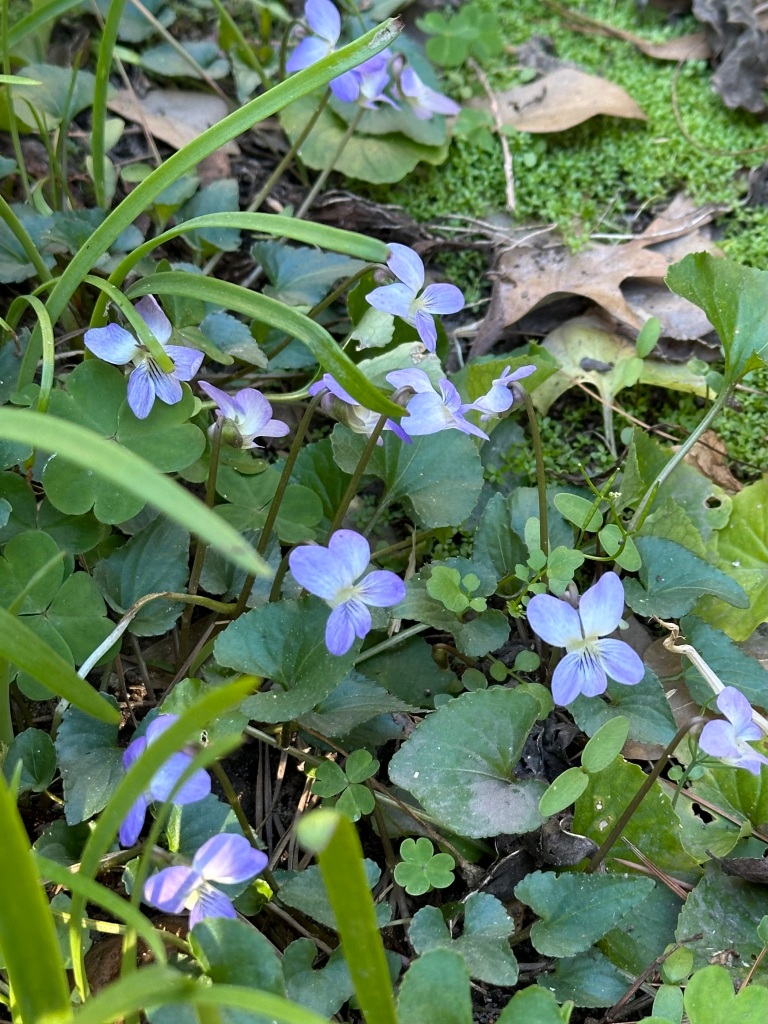
Violets

Snow Poppiy, Ecomecon chioatha
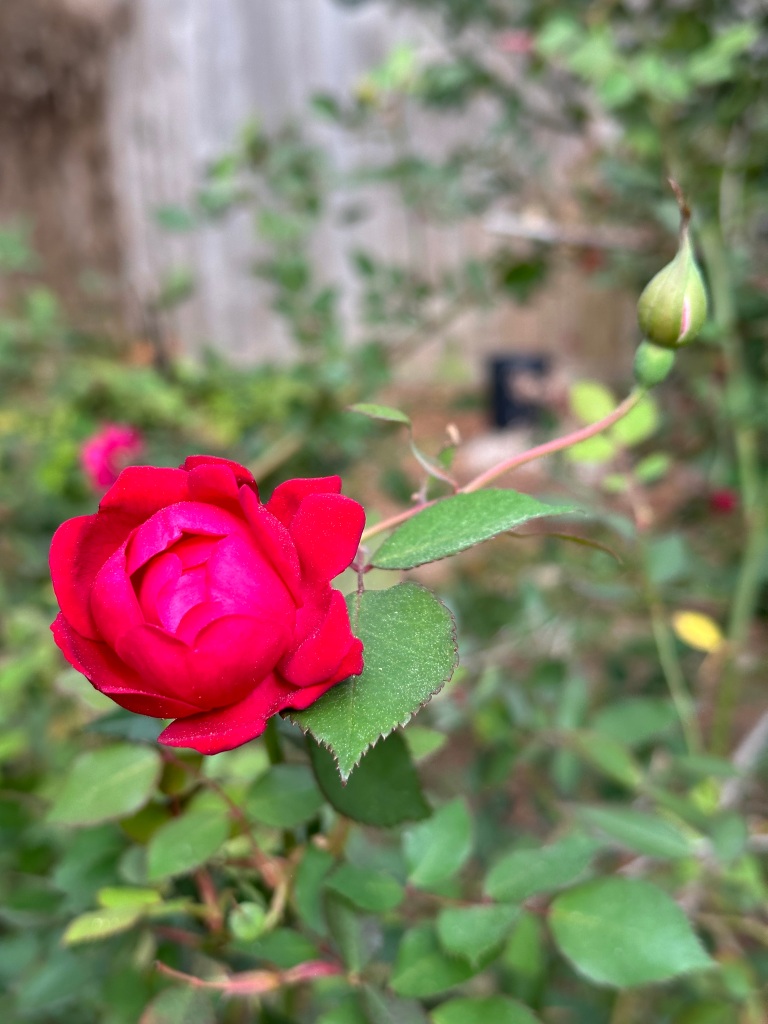
The Cramoisi Superieur rose came back quickly after all its flowers had frozen. My garden usually has many more blooms, but as I posted earlier, all the plants froze back. Every day more of my frozen babies are emerging from the ground. Hopefully, the garden will be full of blooms for the hummingbird migration.
The Comeback
Posted: February 12, 2024 Filed under: Gardening | Tags: Automatic Gardening, Camellia, Gulf Coast gardening, Year-round gardening 21 Comments

Most of the plants in my garden were hit by the hard freeze we had several weeks ago. It was difficult to see them frozen to mush but in almost no time, new shoots were sent up by the still-alive roots.



Happily, the camelias’ tight buds also survived and are now opening. I hate to say that after every freeze I panic a bit my plants will not return but they keep proving me wrong. Thank goodness!
Vacation is Over
Posted: September 21, 2023 Filed under: Gardening | Tags: Automatic Gardening, Gulf Coast gardening, Loblolly Pine Trees, night blooming cereus 13 Comments
We had quite the homecoming when we made it back to Texas. A wind storm, just short of being a tornado, went through our neighborhood. The wind stripped bushels of pine needles from the Loblollies.

Twigs and large branches were blown against the house and covered the roofs. There is a piece of a large limb next to the hose. Our lawn crew did not put any effort into cleaning up. Enlarge for a good look.

A tree and vines from the greenbelt fell on the fence. We were fortunate not to have a limb go through our brand-new roof. The neighbors across the street were not as lucky, the wind drove a limb straight through their roof, and the next storm blew their patch off. The electricity was off for about 8 hours, but we were not home for the 100-plus-degree heat. It has taken us about two weeks to finish the clean-up working slowly in the oppressive Southern heat.

I am always amazed at the force of a thin pine needle. My Night Blooming Cereus, which is a thick succulent had a pine needle driven through it. Enlarge and follow the pine needle to the end.

And now the good news. The anoles have been busy reproducing and there are many baby lizards everywhere, including on my back.

A yellow rain lily that I had not seen bloom for a long time, brought a smile to my face.












